#Jamaican scientist
Explore tagged Tumblr posts
Text

André K. Isaacs
Gender: Male
Sexuality: Gay / Queer
DOB: 20 December 1981
Ethnicity: Afro Carribean - Jamaican
Occupation: Chemist, professor, researcher, influencer
Note: He posts dancing and choreography videos to teach chemistry lessons. Many of his videos have gone viral on these platforms.
#André K. Isaacs#Andre K Isaacs#lgbt#lgbtq#black excellence#mlm#qpoc#qmoc#bipoc#lgbt people#homosexuality#queerness#male#gay#1981#black#afro caribbean#caribbean#jamaican#poc#queer#Afro Carribean#scientist#chemist#teacher#researcher#influencer#dancer#popular#popular post
142 notes
·
View notes
Text
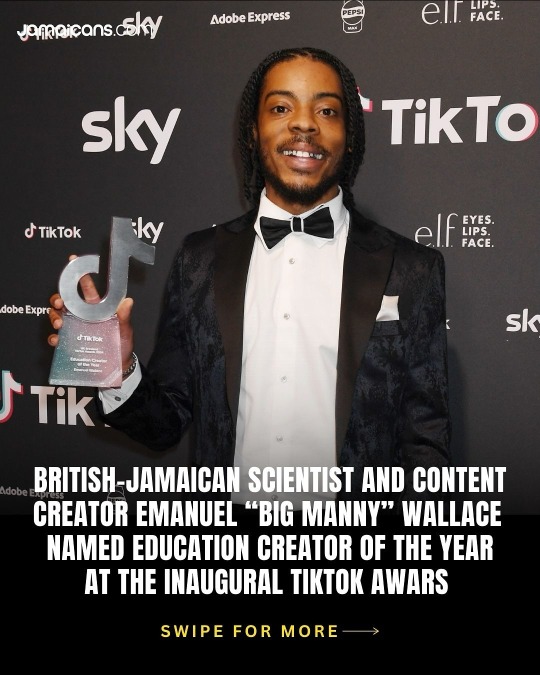
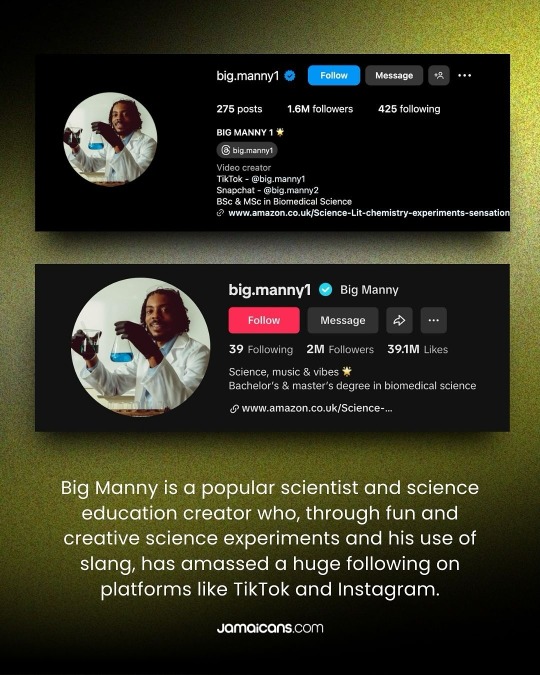
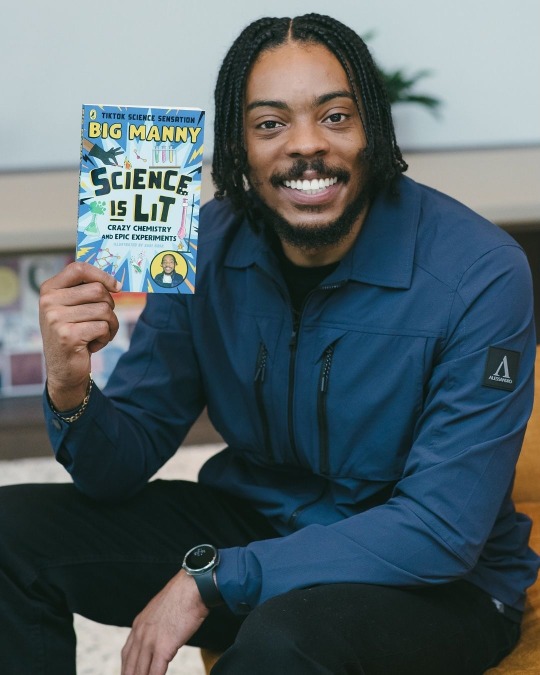

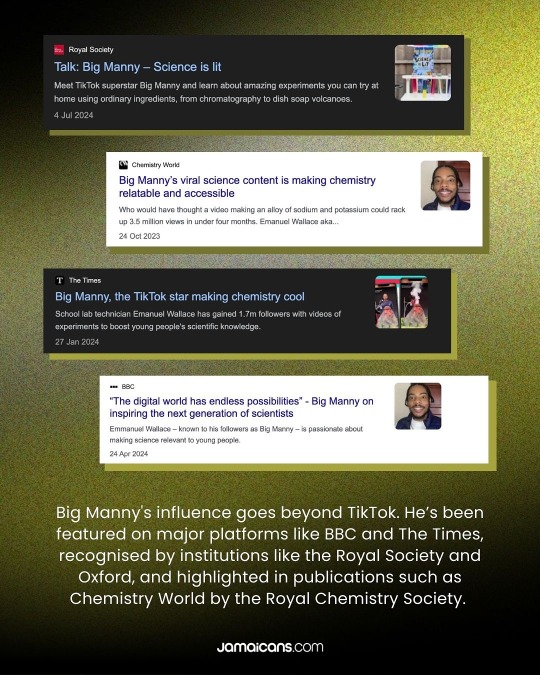
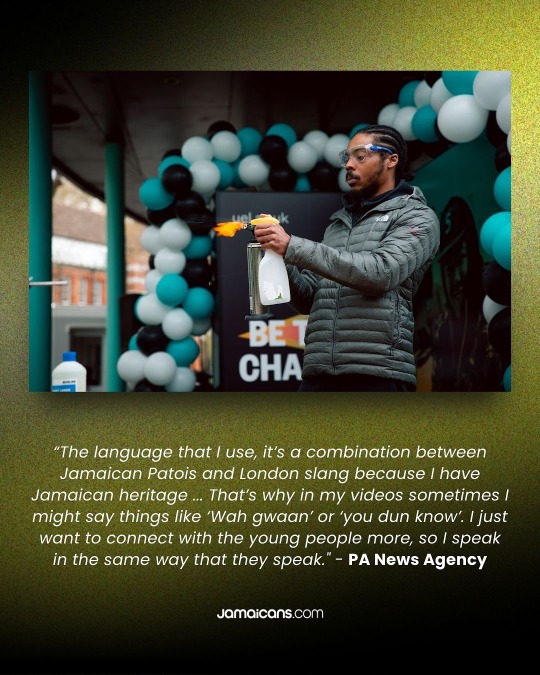

Credit: Jamaicans.com (@jamaicansdotcom) via BIG MANNY 1 🌟 (@big.manny1)
#IG#Instagram#Jamaicans.com (@jamaicansdotcom)#BIG MANNY 1 🌟 (@big.manny1)#TikTok#Big Manny (@big.manny1)#British-Jamaican#Scientist
9 notes
·
View notes
Text
youtube
King Tubby, Prince Jammy, Scientist, First, Second and Third Generation of Dub
Just what it says on the label.
5 notes
·
View notes
Text
Unleash Your Inner Mad Scientist w/ Mad Science 🧬
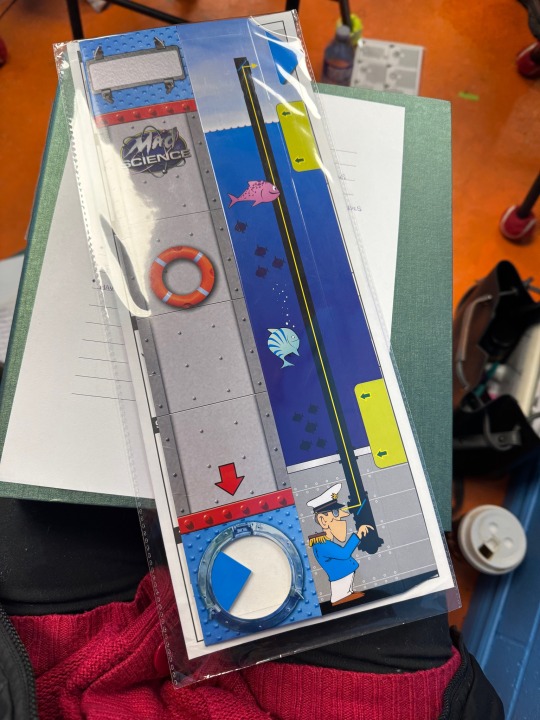

Looking for a way to spark curiosity, creativity, and a love for science in your kids? Mad Science Canada brings mind-blowing experiments, electrifying shows, and hands-on STEM activities right to your doorstep! Whether it’s a birthday party, school workshop, or camp, we make learning fun, exciting, and unforgettable.

Give your little scientists the chance to launch rockets, make slime, and even create crazy chemical reactions—all in a safe and engaging environment!
#ambitious women#beautiful women#beauty#glow society#the glow society#fit beauty#health#self love#self improvement#self care#mad scientist#mad science#science#the glass scientists#stem aesthetic#stem studyblr#stemblr#stemeducation#stemcelltherapy#stem lesbian#stem#women in stem#stem academia#stem student#education#educate yourself#educate yourselves#hot and educated#jamaican women#mixed women
2 notes
·
View notes
Text
Why Are Some People Faster Than Others? Two Exercise Scientists Explain The Secrets Of Running Speed
— April 29, 2024
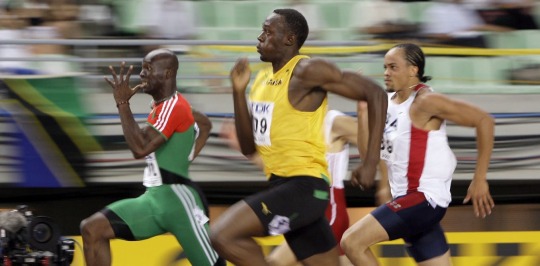
Jamaican Sprinter Usain Bolt, in yellow, Holds the World’s Speed Record For Humans. AP Photo/David J. Phillip
Usain Bolt, The World’s Fastest Human, Ran a 100-Meter Sprint at a Speed of 23.35 Miles Per Hour (37.57 Kilometers Per Hour).
That’s mind-blowingly fast for a human. It’s about the same speed as cruising in a car through your neighborhood or in a school zone. It might not seem that fast when you’re in the car, but for a person? Few runners in the world can even come close.
There are several reasons why some people can run very fast while others tend to run more slowly. Genetics – the traits you inherit from your parents – play a role, but so do your choices and experiences.
As pediatric exercise scientists, we create and evaluate programs that help children be healthy. The exciting news is that while you have no control over your genetics, you can train to improve your speed.
Fast Twitch, Slow Twitch
One major factor that influences your ability to run fast is the structure of your body, including how your muscles work.
The human body has more than 600 muscles that work together, allowing you to move in different directions and at various speeds. These muscles are made up of groups of fibers. There are two main types: fast twitch and slow twitch.
Muscles have different mixes of these fiber types. For example, two muscles make up the calf: One is predominantly fast twitch – that’s the gastrocnemius, used for sprinting and jumping. The other is mostly slow twitch – that’s the soleus, used for walking and jogging.

Speed and endurance are both important when you’re playing soccer. AP Photo/John Cowpland
Fast-twitch muscle fibers are larger and help your body move quickly and generate significant force. Sprinters tend to have an abundance of fast-twitch muscle fibers. However, this muscle fiber type also tires quickly, which limits how long you can run at top speed to relatively short distances.
Slow-twitch muscle fibers are smaller and help you run at slower speeds, but with greater endurance. Long-distance runners and competitive cyclists tend to have a lot of these muscles.
How much you have of each type of muscle fiber – fast twitch and slow twitch – is mostly determined by your genes, so you’ll have to work with what you’re born with when it comes to muscle types. But exercises can help train those muscles.
Your Brain Plays A Big Role
Physical ability isn’t just about muscle. Your brain plays an important role, too.
Your skeletal muscles are controlled by your brain – you think about your actions and then execute the movements. For example, you can control how long your stride is, how your arms move, how your feet hit the ground and even the techniques you use to breathe.
You can teach your body to use the best running techniques. That includes proper posture, so your body is standing tall, and an economical stride, so your feet land below you rather than too far out in front, where they can slow you down.
youtube
Five Tips For Running Faster, From An Olympic Sprinting Coach.
You can also improve your running form by using your whole body, with your arms pumping in opposition to the legs, running on your toes and maximizing the time spent in flight phase with both feet off the ground. Using proper running techniques helps the muscles create more force and work together, which helps you run faster.
The more you practice an activity, the better you will get. As your ability to run fast increases, challenge yourself to run even faster.
How To Train To Run Faster – Myth-Busting!
You may have heard your friends chatting about ways to boost your speed or searched the internet for tips on getting faster. Time to bust some of those myths.
Myth 1: You Have to Run as Fast as You Can to Train to Be Faster. That’s false!
You don’t have to run as fast as you can to get faster, and it actually helps to take short breaks to recover in between activities where you are sprinting.
Myth 2: You Need to Lift Heavy Weights to Get Faster. False!
Functional strength training involves performing exercises that help you get better at specific movements. They involve using either medium weights or just the resistance of your own body weight. Doing planks, lunges, step-ups or jump squats are great examples. These activities focus on the muscles that are instrumental during running.
Myth 3: You Need to Specialize in Running Early in Life to Become a Fast Runner. False!
Picking one activity to focus on early in life may actually limit your ability to develop into a fast runner. Doing a variety of physical activities can help you develop new skills that improve your running. For example, the movements and endurance used in soccer may translate into the ability to run faster.
Myth 4: Training Isn’t Fun. False!
Training programs can take many shapes and forms. You can play running games with your friends, work on fast footwork using an agility ladder or create obstacle courses. There’s nothing like a little healthy competition to motivate your training.
What’s important is having fun while training and participating in activities that promote running speed on a regular basis.
So, whether you want to be the next Usain Bolt or you just want to win a race against your friend, remember that with a little bit of genetic luck and hard work, it may just be possible.
— Dawn P. Coe, Associate Professor of Exercise Science, University of Tennessee
— Elizabeth (Kip) Webster, Associate Professor of Exercise Science, University of Tennessee
#Youtube#Genetics | Exercise | Running | Muscles | Athletics | Speed | Sprinting | Curious Kids | Curious Kids US#Exercise Scientists#Secrets#Running Speed#Jamaican Sprinter | Usain Bolt#World’s Speed Record | For Humans
0 notes
Text
Probably shouldn't be aimlessly browsing pixiv for zeta fanart considering I'm barely a fifth of the way through the show but every time I go on that website I witness that where there's a fujoshi will there's a fujoshi way
#observing the 3 pieces of kacricon x jerid fanart i saw in my wanderings like a scientist in a lab#it's not out of the ordinary because they are friends but i figured kacricon would be too “ugly” for those types to care#also a random jamaican x hymem fanart which is even more ????????!#i suppose it's marginally better than the devious things people are doing to kamille or fa on there (frowns deeply)#◎
0 notes
Text
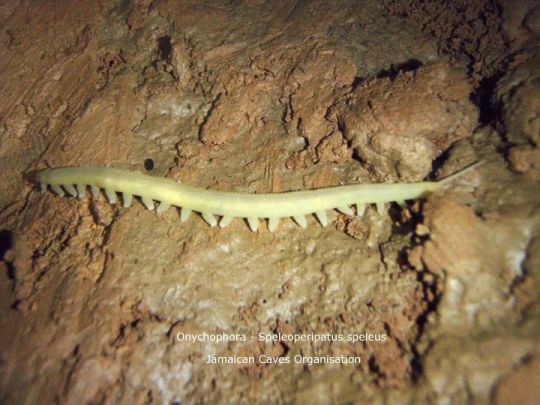
Cave Velvet Worm (Speleoperipatus spelaeus), family Peripatidae, endemic to 2 cave systems in Jamaica
CRITICALLY ENDANGERED.
This species is live bearing (viviparous).
Only 7 individuals have ever been found by scientists (as of 2021).
photograph via: Jamaican Caves Oraganisation
264 notes
·
View notes
Text
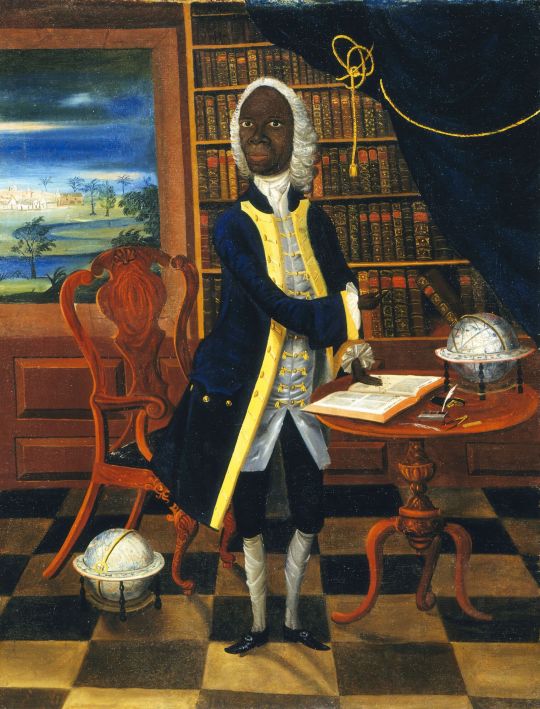
In the LRB, Fara Dabhoiwala lays out his extraordinary research showing that this 18th century painting at the V&A, long interpreted as a racist caricature, actually depicts Jamaican gentleman scientist Francis Williams documenting his observations and calculations of the first expected return of Halley's Comet, which was proof of Newtonian physics.
image: William Williams, attr., Francis Williams, The Scholar of Jamaica, prob 1760, not 1745, in the V&A
36 notes
·
View notes
Text
naomi (she) character & art by @ackee
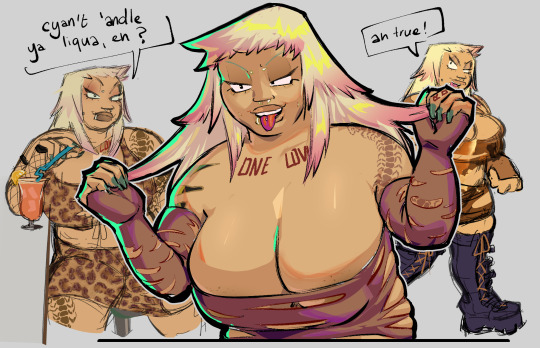
naomi chung, one of the main characters of my future webcomic, traversion. she's a chinese-jamaican immigrant who moved to miami in her mid 20s to pursue her dream of becoming a tattoo artist. outside of work, she spends her time hitting up alternative and caribbean clubs around town with her best friend and roomate, xia. loves to use men for free drinks. a huge bitch with even bigger boobs.
neocities page
VS.
allysion (she) character & art by @identityquest
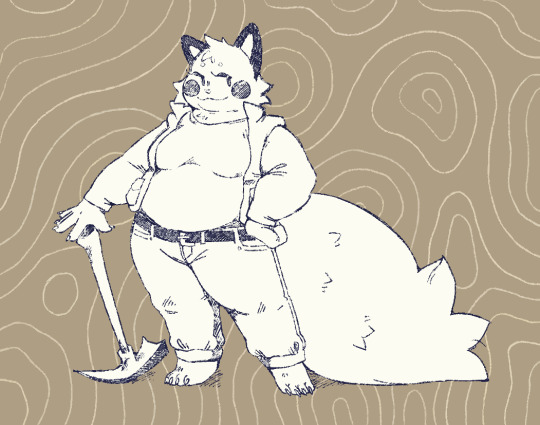
Allysion is a clever and easy-going woman in her early 30s. She comes from rich family history of earth scientists. Her own interests are in speleology and mining technology; she'll often disappear into the depths of the earth for days at a time. She'll gladly talk the ear off anyone willing to listen to her extended lectures on cave formation.
76 notes
·
View notes
Text
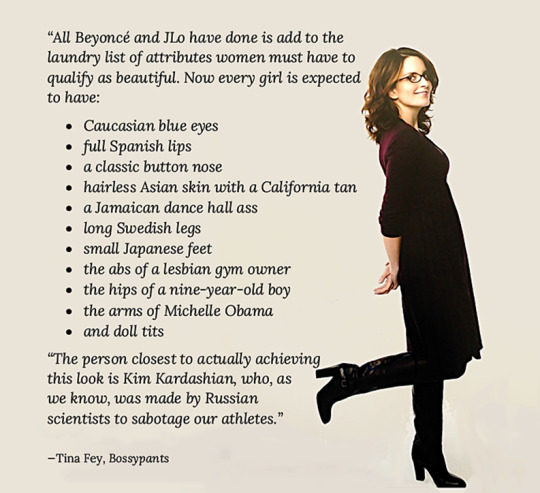
“All Beyoncé and JLo have done is add to the laundry list of attributes women must have to qualify as beautiful. Now every girl is expected to have:
Caucasian blue eyes
full Spanish lips
a classic button nose
hairless Asian skin with a California tan
a Jamaican dance hall ass
long Swedish legs
small Japanese feet
the abs of a lesbian gym owner
the hips of a nine-year-old boy
the arms of Michelle Obama
and doll tits
“The person closest to actually achieving this look is Kim Kardashian, who, as we know, was made by Russian scientists to sabotage our athletes.”
—Tina Fey, Bossypants
____________ Meme Sources: Image; layout
#tina fey#bossypants#women's beauty expectations#ridiculous beauty standards for women#quote#my memes
27 notes
·
View notes
Text
Below are 10 biographical articles from Wikipedia's featured articles list, and then a poll. Which article sounds the most interesting to you?
Cai Lun (c. 50–62 – 121 CE) was a Chinese eunuch court official of the Eastern Han dynasty.
Eunice Newton Foote (July 17, 1819 – September 30, 1888) was an American scientist, inventor, and women's rights campaigner.
Georges Bizet (25 October 1838 – 3 June 1875) was a French composer of the Romantic era.
Gregor MacGregor (24 December 1786 – 4 December 1845) was a Scottish soldier, adventurer, and confidence trickster who attempted from 1821 to 1837 to draw British and French investors and settlers to "Poyais", a fictional Central American territory that he claimed to rule as "Cazique".
Hasan al-Kharrat (1861 – 25 December 1925) was one of the principal Syrian rebel commanders of the Great Syrian Revolt against the French Mandate.
Olive Morris (26 June 1952 – 12 July 1979) was a Jamaican-born British-based community leader and activist in the feminist, black nationalist, and squatters' rights campaigns of the 1970s.
Osbert Lancaster (4 August 1908 – 27 July 1986) was an English cartoonist, architectural historian, stage designer and author.
Tom Driberg (22 May 1905 – 12 August 1976) was a British journalist, politician, High Anglican churchman and possible Soviet spy, who served as a Member of Parliament (MP) from 1942 to 1955, and again from 1959 to 1974.
William Howard Taft (September 15, 1857 – March 8, 1930) was an American politician and lawyer who was the 27th president of the United States, serving from 1909 to 1913, and the tenth chief justice of the United States, serving from 1921 to 1930, the only person to have held both offices.
Wulfhere (died 675) was King of Mercia from 658 until 675 AD.
#Wikipedia polls#a bit longer than I hoped because sometimes the first sentence just doesn't tell you that much#i tried to only add a second sentence when it's crucial; hopefully it's not too much of a wall of text
15 notes
·
View notes
Text
Janet Jackson Apologizes for Kamala Harris ‘Confusion’
WHOOPS NOW
“She deeply respects Vice President Kamala Harris and her accomplishments as a Black and Indian woman,” a spokesperson for Jackson said.
Sean Craig
Published Sep. 22, 2024 1:19PM EDT

Gilbert Flores/Getty Images
Singer Janet Jackson apologized through a representative for claiming Vice President Kamala Harris, who is Black, is “not Black.”
“She’s not Black,” said Jackson, in an interview with The Guardian newspaper published Saturday. “That’s what I heard. That she’s Indian. Her father’s white. That’s what I was told. I mean, I haven’t watched the news in a few days. I was told that they discovered her father was white.”
Harris, of course, is not half-white and is very much Black. Her father is Donald Harris, a Jamaican-American economist who was the first Black scholar to receive a tenured position at Stanford’s economics department.
Kamala Harris Dismantles Donald Trump’s Attack on Her RaceHIGH ROADJosh Fiallo
Harris, who graduated from leading historically Black university Howard, has frequently spoken about her Black identity in politics. She also once joked, when asked if she’d ever smoked marijuana, “Half my family’s from Jamaica, are you kidding me?”
She is also Indian. Her late mother, Shyamala Gopalan, a medical scientist who worked at the Lawrence Berkeley National Laboratory, was originally from Chennai.
instagram
A spokesperson for Jackson told BuzzFeed her comments were “based on misinformation.”
“She deeply respects Vice President Kamala Harris and her accomplishments as a Black and Indian woman,” the spokesperson added. “Janet apologizes for any confusion caused and acknowledges the importance of accurate representation in public discourse. We appreciate the opportunity to address this and will remain committed to promoting unity.”
Jackson’s rep didn’t explain how that information came to her.
Former president Donald Trump—Harris’ opponent in this year’s presidential election—has polluted the public conversation about Harris’ race, making false claims that Harris misled voters about her background
“I didn’t know she was Black until a number of years ago when she happened to turn Black and now she wants to be known as Black,” Trump told the annual convention of the National Association of Black Journalists in Chicago last month. “I don’t know, is she Indian or is she Black?”
At least Janet Jackson now knows the answer is “both.”
Sean Craig
@sdbcraig
ALL I GOTTA SAY IS:
Who pulled that old has-been's chain?
10 notes
·
View notes
Text

In April 2024, scientists from the Natural History Museum of Jamaica and The University of the West Indies, Mona Campus accepted a very rare and historic specimen: a 16-inch lizard called the Jamaican giant galliwasp (Celestus occiduus). It had previously been stored in the Hunterian museum at the University of Glasgow in Scotland. “‘Celeste’ is home!” announced one Jamaican news outlet [...]. Celeste was collected in the 1850s and represents a species that was endemic to Jamaica but is now classified as critically endangered and possibly extinct. Scientists in Jamaica, who have never seen or handled one of these lizards, are elated [...]. As scholars of Jamaican landscape histories who are interested in environmental justice, we believe this repatriation illustrates important truths about colonialism and its legacies.
Celeste’s 170-year residence in a Scottish university collection speaks to uncomfortable connections between colonialism and natural history.
---
[O]fficials, physicians, naturalists and amateurs from Europe traveled across the colonized world, collecting local plants and animals [...]. Many objects they brought back [...] are housed today in European libraries and museums. [...] “The Civil and Natural History of Jamaica,” by Patrick Browne, published in 1755, was the first text in the English language to use the system of classifying plants developed by Carl Linnaeus. The book shows how major advancements in natural history, botany and biology relied on field work conducted far beyond metropolitan Europe. [...] Exploration and collecting specimens often relied on the knowledge and labor of enslaved persons who acted as field assistants and guides – but the historical record has little to say about their roles. Today, organizations such as Kew Royal Botanical Gardens in England and the New York Botanical Garden continue to rely on the knowledge and collections derived from colonial-era tropical botanical gardens in places like the Caribbean islands of St. Vincent and Jamaica.
In Jamaica, there was a direct relationship between geological exploration and the plantation system. The first geological surveys of Jamaica were conducted by naturalist Sir Henry De la Beche, the son of a Jamaican plantation owner and first director of the Geological Survey of Great Britain.
British physician and naturalist Sir Hans Sloane’s extensive holdings of books, manuscripts and specimens became the founding collection of the British Museum. [...] His collections include more than 1,500 plant specimens from Jamaica, which he acquired there from 1687 to 1689. After England gained formal possession of Jamaica in 1670, it established monoculture production of sugarcane across the island. Extensive land clearance, damage to local ecosystems [...] exacted a heavy toll. Some of the plant and animal specimens that collectors extracted and exported abroad may be the only ones that exist today.
---
Colonizers also introduced harmful species, such as the Indian gray mongoose (H. edwardsii), which was brought to Jamaica to prey on rats in plantation sugarcane fields. [...] The Indian grey mongoose quickly became a major threat to numerous species, including the Jamaican giant galliwasp.
It remains a key adversary today in the struggle to stabilize the population of the critically endangered Jamaican iguana. [...]
The Jamaican giant galliwasp’s classification as possibly extinct in the wild reflects optimism from the almost unbelievable rediscovery of the Jamaican iguana (Cyclura collei). Prior to 1990, this species was presumed extinct, but then scientists discovered a remnant population in the island’s Hellshire Hills.
---
All text above by: Alex A. Houghton and Thera Edwards. "Returning a 170-year-old preserved lizard to Jamaica is a step toward redressing colonial harms". The Conversation. 3 June 2024. At: theconversation.com/returning-a-170-year-old-preserved-lizard-to-jamaica-is-a-step-toward-redressing-colonial-harms-229339 [Bold emphasis and some paragraph breaks/contractions added by me. Presented here for commentary, teaching, criticism purposes.] Image and caption are shown unaltered as they originally appear published with the article. Image is CC BY-ND 4.0, available at biodiversitylibrary.org/page/188786.
14 notes
·
View notes
Text
Character Intros F-M
Iris Rae Foster | She/Her | Capricorn | Black American | 23 | 5’5
Iris is an illusionist Witch, works as a carnie at Moonlight Carnival. Not excitable in the slightest, but well meaning and sweet. Studies entomology and loves shrimp cocktails and melon soda.
Common attributes/symbols: Her piercings.
Common activities/hobbies: Palm reading, tea reading, tarot cards, swimming, taking pictures of bugs
Setting: From my original story: One Last Witch, lives in Georgia.
You can draw them with:
Her sister.
Additional stuff to keep in mind: Autism
Pinterest Link: HERE Tumblr Tag Link: HERE
➽──────────────❥
Yiesha Mae Foster | She/Her | Capricorn | Black American | 23 | 5’5
Yi is a sugar baby Vampire. None of her clients make it out alive. Also studies entomology, used to enjoy steak and melon soda as a human.
Common attributes/symbols: Her fangs.
Common activities/hobbies: Golfing, playing tennis, pilates, yoga, watching plays, hunting, collecting bugs
Setting: One Last Witch, lives in Georgia.
You can draw them with:
Her sister! they are very close
Additional stuff to keep in mind: Her second mouth is invisible if not in use. Bite marks on neck, but she hides it. Ears are pointy at all times.
Pinterest Link: HERE Tumblr Tag Link: HERE
➽──────────────❥
Jezebel ‘Jazzland’ Marie Hemlock | She/Her | Scorpio | Haitian-American | 20s | 5’8
A Woman who killed and will kill again, but she has big brown eyes. She is a Higher Generation witch who practices necromancy. Now settling on raising an undead army, and transferring into a lich. Looking for a drama free relationship.
Common activities/hobbies: Gardening, crafting potions, boosting spells, neuroscience, knitting, record collecting, soap making, mixology, video games
Setting: One Last Witch
You can draw them with:
DOVE, evil women <3
Additional stuff to keep in mind: n/a
Pinterest Link: HERE Tumblr Tag Link: HERE
➽──────────────❥
Bunny Valentina Jackson | She/Her | Aquarius | Afro-Filipino + Taiwanese | 30s | 5’4
Daughter of an Olympian swimmer and a government scientist, Bunny always had a silver spoon in her mouth. Works as an Archivist at a museum. Practices: Kick Boxing & Tai Chi.
Common attributes/symbols: Bow in hair at ALL times.
Common activities/hobbies: Reading, searching for info in the archives, karaoke, trolling on reddit, collecting old books/magazines
Setting: From my original story: Reuploaded, it takes place in Texas. Or Fallout as the Lone Wanderer.
You can draw them with:
Domo, besties since 2nd grade
Exquisite, Bunny has a one sided crush on her
Sota, they hang out
Additional stuff to keep in mind: Blonde, Brunette, or Pink hair are cool, idrc which you choose. 3rd and 4th pics are her fallout looks.
Pinterest Link: HERE Tumblr Tag Link: HERE
➽──────────────❥
Dominique “Domo” Chevelle Morris-Brown | She/Her | Leo | Jamaican | 30s | 5’6
After winning gold in the Olympics, having a child, and getting divorced, Domo has the great honor of cleaning out her late grandfather’s home. Then things get weird when Exquisite randomly appears in her grandfather's house.
Common attributes/symbols: Likes big belts
Common activities/hobbies: Sketching, watching nascar, playing saxophone, piercing people, playing video games
Setting: From my original story: Reuploaded, it takes place in Texas.
You can draw them with:
Bunny, they are bffs
Sota, she is crushing on him
Exquisite, is like her annoying little sister
Additional stuff to keep in mind: Dresses masc, but is fairly curvy
Pinterest Link: HERE Tumblr Tag Link: HERE
➽──────────────❥
3 notes
·
View notes
Text
Kamala Devi Harris, was born in Oakland, California, on October 20, 1964. Her mother, Shyamala Gopalan, was an Indian biologist and Breast Cancer Research Scientist and father, Donald J. Harris, an Afro-Jamaican and the first Black scholar to be granted tenure at Stanford University's economics they met at at a Civil Rights meeting of the Afro-American Association, a students' group at California University, Berkeley.
Team Harris-Walz will be making 5,000,000 calls for her birthday present. Are you in?? events.democrats.org
#kamalaharris #birthday #ShyamalaGopalan #DonaldJHarris #voteblue #bluewave #bluetsunami #tiktokviral #harriswalz #savedemocracy
#joyfulwarriors #votedemocrat #timwalz #unitedstates #california #losangeles #presidentialelection #elections
#politics #political #democracy #freedom #democrats #forward #letswinthis #werenotgoingback #kamala #movingforward
#fy #fyp #fypシ #fyppppppppppppppppppppppp
5 notes
·
View notes
Text

Gilbert Scott-Heron (April 1, 1949 – May 27, 2011) was a soul and jazz poet, musician, and author, known primarily for his work as a spoken-word performer in the 1970s and 1980s. His collaborative efforts with musician Brian Jackson featured a musical fusion of jazz, blues, and soul, as well as lyrical content concerning social and political issues of the time, delivered in both rapping and melismatic vocal styles. His term for himself was “bluesologist”, which he defined as “a scientist who is concerned with the origin of the blues”.
He was born in Chicago. His mother, Bobbie Scott, was an opera singer who performed with the Oratorio Society of New York. His father, Gil Heron, nicknamed “The Black Arrow”, was a Jamaican footballer who in the 1950s became the first African American man to play for Celtic F.C. in Glasgow, Scotland.
His music, most notably on the albums Pieces of a Man and Winter in America in the early 1970s, influenced and foreshadowed African American music genres such as hip-hop and neo-soul. He is considered by many to be the first rapper/MC ever. His recording work received much critical acclaim, especially one of his best-known compositions, “The Revolution Will Not Be Televised”. AllMusic’s John Bush called him “one of the most important progenitors of rap music,” stating that “his aggressive, no-nonsense street poetry inspired a legion of intelligent rappers while his engaging songwriting skills placed him square in the R&B charts later in his career.”
He remained active until his death, and in 2010 released his first new album in 16 years, entitled I’m New Here. A memoir he had been working on for years up to the time of his death, The Last Holiday, was published posthumously in January 2012. He received a posthumous Grammy Lifetime Achievement Award in 2012. He is included in the exhibits at the National Museum of African American History and Culture and NMAAHC publication, Dream a World Anew.
He married Brenda Sykes. He has three daughters and one son. His nephew is Terrance Kelly, an actor, and rapper who performs as Mr. Cheeks and is a member of Lost Boyz. #africanhistory365 #africanexcellence
2 notes
·
View notes